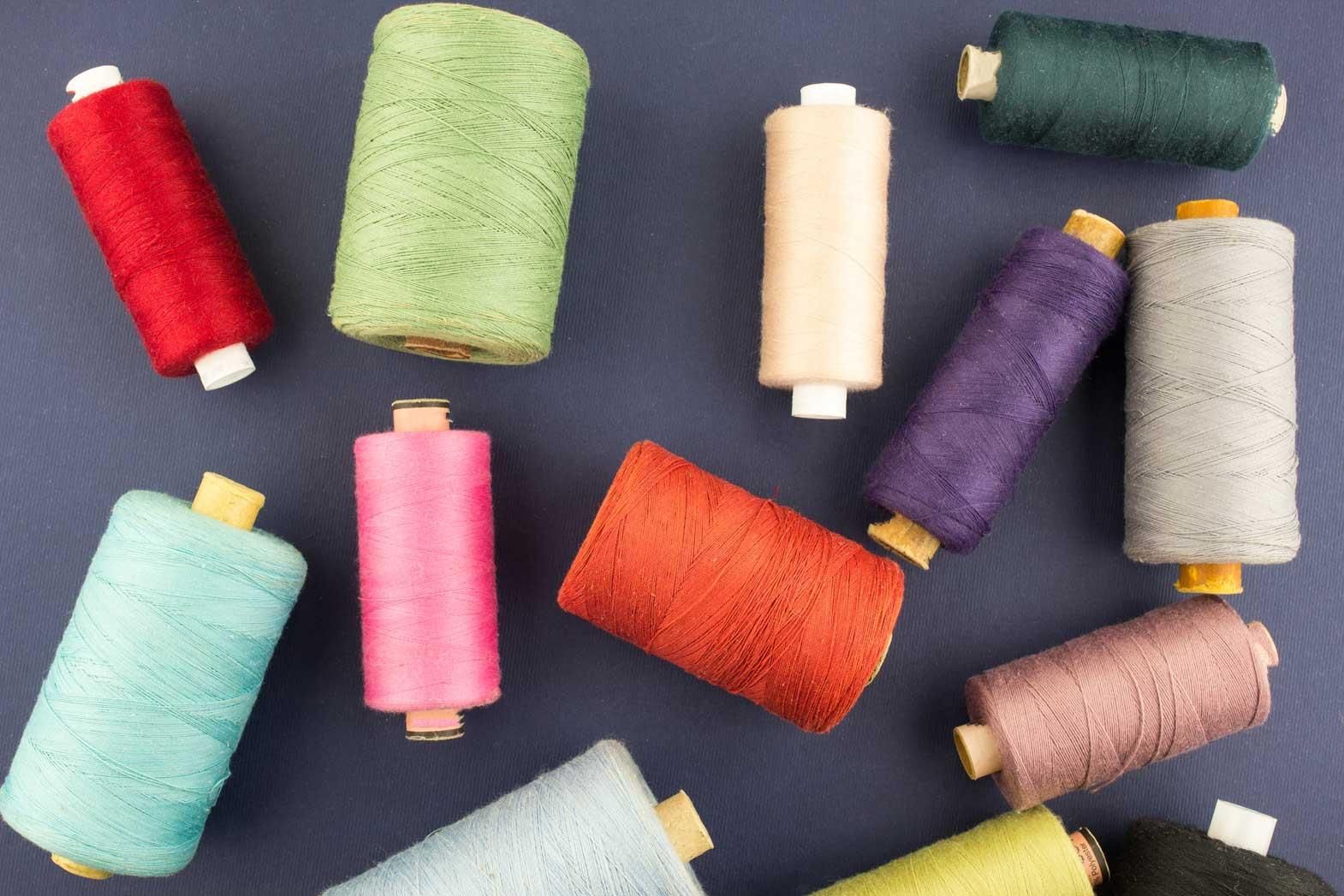Thetextile industry has generally been thrifty with resources, yet a largeproportion of unnecessary waste is produced. One of the biggest problems ismanagement of this solid waste. Developing value added products may be theanswer, points out
The Indian textile industry is notonly among the oldest industries in the country but one of the major employmentproviders that fetches foreign exchange. It caters to some of the mostessential consumer needs such as draperies, carpets, rugs and other textileproducts.
The concept of "greenchemistry" and sustainability has been discussed in many manufacturingindustries. Recycling thermoplastic has become vital, keeping in view long-termenvironmental effects of irresponsible waste disposal. The current concernregarding disposal of industrial and post-consumer waste in diminishinglandfill sites has focused attention on developing effective reclamation andrecycling processes.
Recycling is the most feasibleapproach to reducing solid waste. Textile recycling is gaining widespreadpopularity as clothing and fabric generally consist of composites ofbiodegradable natural fibres and non-biodegradable synthetic plastics, whichcan be recycled. Recycling provides both environmental economic benefits bylowering the need for landfill space and helps reduce use of modest resources,pollution and energy consumption.
Taiwan and Japan have been workingclosely to manufacture recycled fabrics as does Libolon Co Ltd. Taiwan haslaunched RePET and Ecoya yarn made from recycled polyester PET bottles.Patagonia has built a recycling system of polyester fabrics and aims to producerecycled apparel by 2010. The company has recycled more than 6,000 kg ofgarments and has conducted an analysis of the common threads process tocalculate the energy and carbon dioxide emission for recycled garments. GlobalRecycle Standard, launched in 2008, works on the principle of traceability,environmental management and social responsibility. Awareness in recycling is aresult of many factors including emerald consumerism, increasing waste disposalproblems, raw material costs and evolution of waste into a smoothly runningcommodity industry.
Reprocessing used clothing,fibrous material and clothing scraps from manufacturing processes has alreadybeen adopted by the shoddy units. Recycled wool has been re-used in industrialprocesses for a long time. Old clothing, rags, tailor's clippings and wastefrom wool manufacturing are all important sources for obtaining fibrous raw materialsby these units. Also called salvaged, reclaimed or remanufactured, it is bestknown in the textile industry as shoddy. It consists of rags and shreds ofstockings, flannels, and other soft worsted fabrics torn and reduced tofragments of the original fibre. High quality fibres can be produced fromdiscarded fabrics if they contain good quality of unfelled fibres that have notbeen severely treated. Good quality of reused wool, when woven into fabric, hasgreater resistance to abrasion than inferior quality of wool produced fromfibres that are not only irregular and weak but also lack protecting scales.Re-used wool is often blended with new wool before being re-spun. Mostreprocessed fibres are produced by the woollen mills themselves, whereas large percentageof reused wool is bought by shoddy manufacturers, who may operate independententerprises for producing woven blankets and carpets.
1. Material Methods
1.1 Collection of motifs
A study was conducted in Punjab Agricultural University, Ludhiana for development of value added products from shoddy or recycled yarn. Shoddy yarn was collected from Ludhiana and Amritsar districts of Punjab for preparing fabric. Two counts of shoddy yarn i.e. 10Nm and 12Nm were selected for product development. Of 24 prototype samples designed, six most preferred designs were obtained for development of value added products. Then, consumer acceptability was assessed. Motifs were selected through secondary sources such as internet, encyclopaedia, books and magazines.
On the basis of preferences, various designs and colour combinations of textile products were used. The six most preferred designs were used for preparing value added products namely cushion cover, table mat, carry bag, wall hanging, stole and muffler.
An inventory was prepared to record the views of consumers. The respondents were asked to give preferences regarding innovativeness, texture, colour combination and overall appeal prepared from these textile products. The cost effectiveness of the textile products was studied by asking respondents to give selling price for each article. Sixty women consumers were randomly selected between the ages of 25 and 35 years to collect the information regarding their acceptance for developed textile products.
Table 1 indicates that the maximum respondents, i.e. 73.3 per cent were in the age group of 25-30 years. A majority of respondents were post-graduate with family income of ₹35,000-45,000.
Table1: Distribution of respondents according to socio-personal traits
(n-60)
1.2 Preferences of respondents for prepared articles
Data in Fig 1 reveals that a majority of respondents preferred cushion cover (WMS 4.9) for its innovativeness. Stole (WMS 3.7), wall hanging (WMS 3.4), carry bag (WMS 3.3) and muffler (WMS 2.7) got second, third, fourth and fifth ranks respectively for their innovativeness.
Regarding preferences for colour combination, the majority of the respondents preferred cushion covers with weighted mean score 5.1 (Fig 2).
Preferences of respondents for the prepared articles on the basis of texture have been presented in Table 2. A majority of respondents considered the cushion cover as the best of the products shown, with respect to texture.
Figure 1: Preferences of the respondents regarding innovativeness
WMS: Warehouse Management System
Figure 2: Preferences of respondents regarding colour combination
Table 2: Preferences of respondents for texture of prepared articles
1.3 Assessment of consumer acceptability for developed products
The results of the percentage profit margin of each article as reported by the consumers have been furnished in Fig 3.
Profit margin on carry bag was highest, .i.e. 50 per cent followed by 33.3 per cent and 30 per cent profit in case of muffler and table mat respectively.
Fig 3: Assessment of the profit margin of prepared articles
3.4 Suitability of quoted price of products
A majority of respondents (57 per cent) found the quoted selling prices of the prepared articles adequate (Table 3). Besides, 25 per cent of respondents found the quoted prices low and only 18 per cent of respondents found price of the articles to be high.
Table 4 Opinions of respondents regarding suitability of quoted price (n=60)
Figures in parentheses indicate percentages, f= frequency, n=number of consumers
All the developed products have
been appreciated by immediate consumers. The cushion cover was liked by most
respondents for colour combination, texture and innovativeness. Quoted price of
articles made from shoddy yarn was found adequate with a profit margin of 25 to
50 per cent. Most of the developed products were acceptable to consumers.
This proves that shoddy yarn was
economically utilised and has potential use in developing different textile
products.
Reference
1. Sakthivel S M, Ramachandran T,
Chandhanu R, Gowthami R, Padmapriya J and Vadivel P (2012) Development of
technical textiles for automotive applications using reclaimed fibres. J Man
Made TexInInd, 6:201-13.
2. Phong M (2009) Recycling
fabrics gaining popularity. World Tex41:576 (Abstr).
3. Corbman P S (1985) the Textiles
Fiber to Fabric. Publication Mc Graw-Hill, Inc.
4. Hawley J M (2006) digging for
diamonds: A conceptual framework for understanding reclaimed textile products.
Clothing and Tex Res J24: 262-75.
5. Mauersherger H R (1954) Textile
Fibers. Pp.667-71, New York publication.
About
Author:
Dr. Mohini Gupta is an assistant professor at Pushp Institute of Sciences and Higher Studies, Piliphit.












Comments